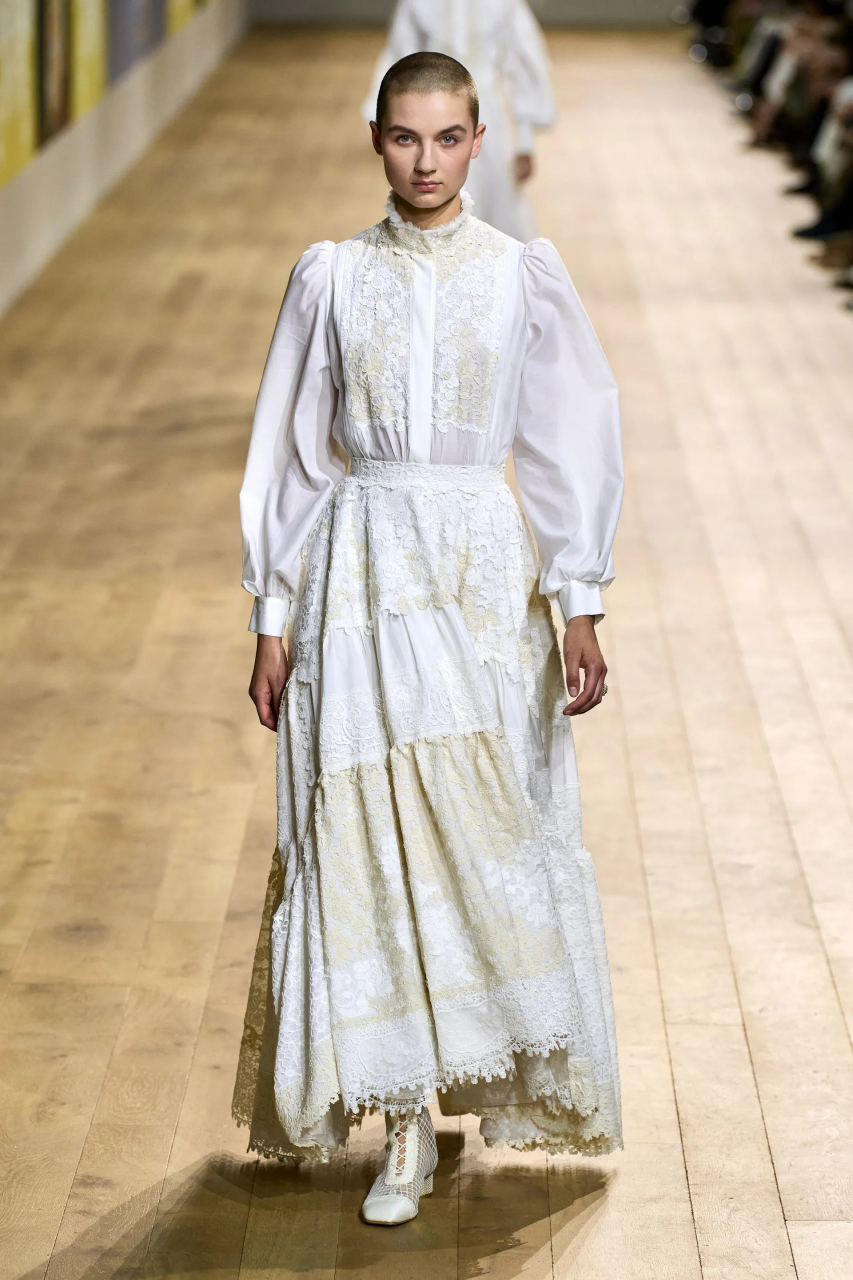When Maria Grazia Chiuri saw the work of the Ukrainian artist Olesia Trofymenko in spring, she knew she wanted to work with her for her fall haute couture show. “I saw this work of hers in Maxxi, the contemporary art museum in Rome, in which she embroidered onto a painted landscape,” said the designer. “When I saw this piece, I understood that the reference in the embroidery comes from Ukrainian folk costume.”
After discussion, the artist, who lives in Kyiv, suggested using an element of Ukrainian folklore, the Tree of Life, as an emblematic theme. The idea resonated with Chiuri. Not just because (presumably) she wanted to support and spotlight the work of an artist in time of war, but also because the symbolism of the Tree of Life occurs across so many cultures and religions. “It speaks about the circle of life,” Chiuri observed backstage while the show was about to take to the runway, in a tent pitched in the garden of the Musée Rodin. “And we have to remember all the time. In some way we need to rethink again now, to move to the future.”
The part of Christian Dior’s foundation story that feels so relevant to Chiuri right now is the fact that he set up his couture house right after World War II. The thrill of his clothes brought not just beauty and optimism to clients, but also a renewal of livelihoods to French workers all along the supply chain. This is a point the house of Dior kept pushing during the pandemic. Were they going to stop showing, or begin showing less, because of the pandemic? No they were not. There are too many people—skilled people, and freelance people—involved in the production of collections and shows to let it go.
The scale of it all, now that audiences and clients are back, is every bit as big as it ever was. To Chiuri’s mind, though, haute couture is an intimate practice, a matter which is very much between the client and the craftspeople who are behind making their clothes. There was a sense of gentleness and reserve in the color palette of white and pale beige this season; a similarity in the long silhouettes, variously rendered as big-sleeved blouses, tiny jackets and capes. But all the glory was in the intricate surfaces, in particular in the way flowers, especially the Dior rose, were worked into lace patchworks and deeply encrusted 3-D beaded embroidery.
If anything, it was less of a classic ‘Dior’ collection from Chuiri—at least until you looked closely. Then you realized that Dior corsetry had simply migrated into almost dirndl-like dresses, and that the season’s iterations of the Bar jacket were actually entirely constructed from amazingly finely pleated hand-smocking. “Some of the work is not so visible; it’s invisible except to the client,” Chiuri said.
The whole collection felt quietly romantic, less rigid. Chiuri had also reimagined Dior’s flowers—his love of roses—and also somehow related it back to the folk costume embroideries that became a basis of the collection. Respect for atelier staffs has been a topic of conversation this week, but for Chiuri that goes beyond the importance of keeping good people salaried “because,” as she put it, “we have the responsibility to build bridges with the craft and this dialogue.”


